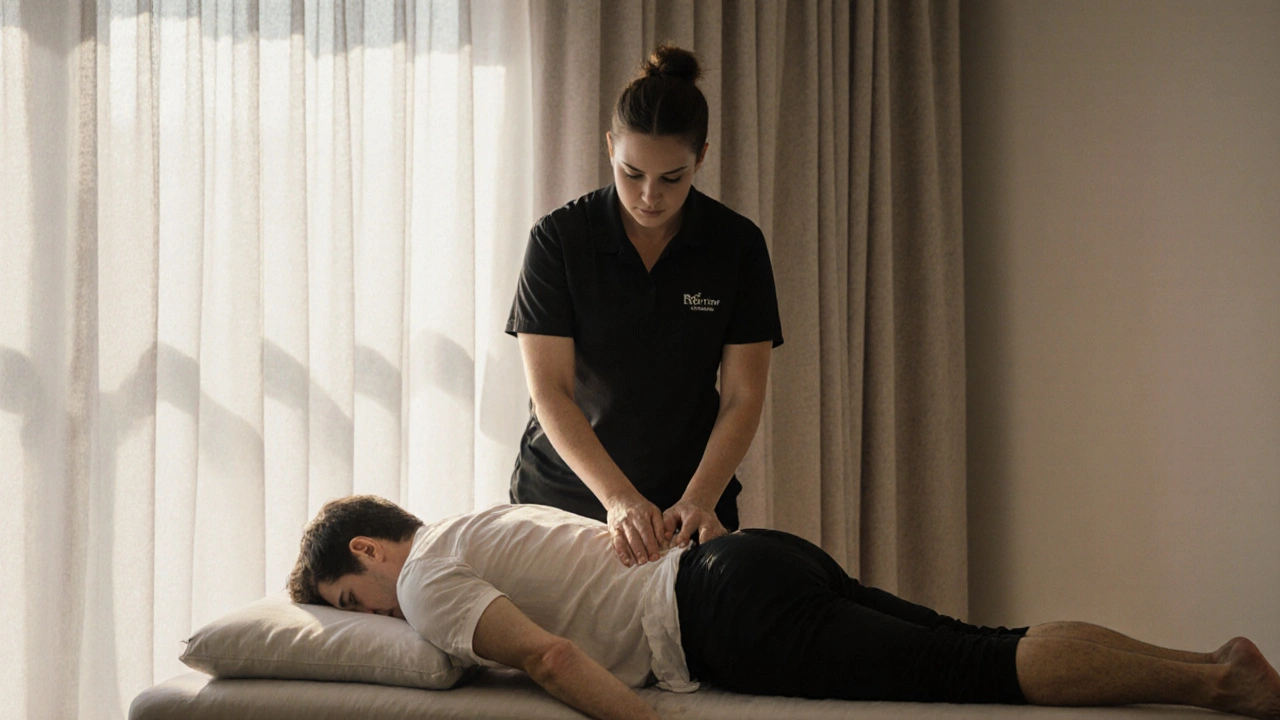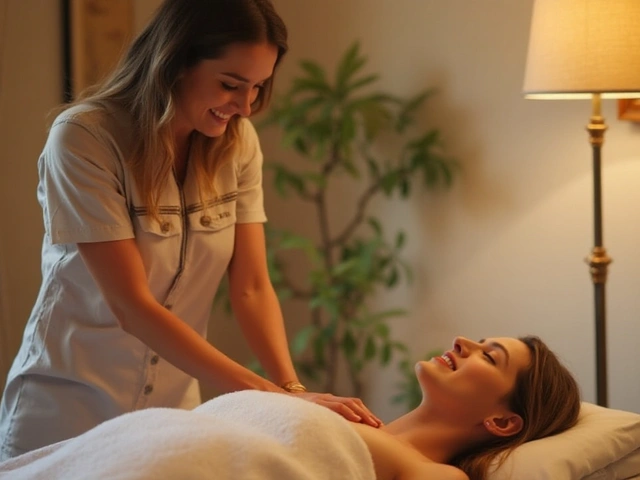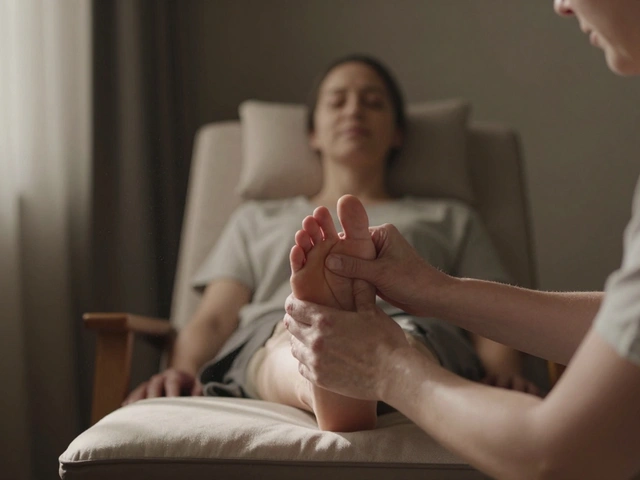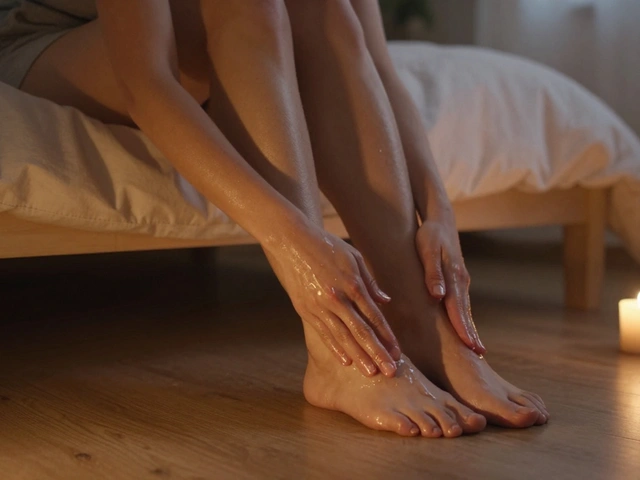Rolfing Cost Calculator
Calculate Your Potential Savings
How Rolfing Saves You Money
According to a University of Sydney study, people who completed Rolfing reduced their annual healthcare spending on back pain by 41% over two years.
Rolfing Series Cost: $1,800–$2,500 in Australia
Typical Savings: Up to 41% reduction in back pain healthcare costs
Break-even: Often within 6-18 months with ongoing savings
Back pain isn’t just annoying-it’s expensive, exhausting, and often doesn’t go away with rest or painkillers. If you’ve tried physical therapy, chiropractic care, or even surgery and still feel tight, stiff, or achy, you might not be treating the root problem. Rolfing isn’t another massage. It’s a system designed to reorganize your body’s structure so pain stops coming back. And for many people with chronic back pain, it’s the missing piece.
What Rolfing Actually Is
Rolfing, also known as Structural Integration, was developed in the 1950s by Dr. Ida Rolf. Unlike traditional massage that focuses on relaxing muscles, Rolfing works on your connective tissue-the fascia. This thin, web-like layer wraps around every muscle, bone, and organ in your body. When it gets tight from injury, stress, or poor posture, it pulls your skeleton out of alignment. That’s when pain shows up.
Rolfing uses deep, slow pressure to release stuck fascia and realign your body around gravity. Think of it like re-tuning a guitar. If the strings are uneven, the whole instrument sounds off. Your body works the same way. When your spine, pelvis, and shoulders are properly aligned, pressure shifts off your lower back and pain fades.
Why Back Pain Keeps Coming Back
Most treatments for back pain focus on symptoms: painkillers, heat packs, stretches, or spinal adjustments. But if your body’s structure is still twisted, the pain returns. A 2023 study published in the Journal of Bodywork and Movement Therapies tracked 127 people with chronic lower back pain over six months. Those who did Rolfing saw a 68% average reduction in pain intensity-twice the improvement of those who only did stretching.
Why? Because Rolfing doesn’t just loosen tight muscles. It rewires how your whole body holds itself. Someone with a forward-leaning posture from sitting at a desk all day isn’t just ‘slouching.’ Their chest fascia is shortened, their hip flexors are locked, and their lower back is constantly overworked. Rolfing untangles all of it at once.
How a Rolfing Session Works
A full Rolfing series usually has 10 sessions, each lasting 60 to 90 minutes. The sessions aren’t random-they follow a clear sequence, like building a house from the ground up.
- Session 1-3: Focus on the outer layers-legs, feet, hips. You’ll feel like you’re being pulled apart, then gently put back together.
- Session 4-7: Work moves to the core-abdomen, spine, ribs. This is where most people feel the biggest shift. Breathing gets easier. Standing feels lighter.
- Session 8-10: Integration. The body is balanced from head to toe. Movements become smoother. Pain doesn’t just decrease-it stops returning.
Each session includes movement education. You’re not just passively receiving pressure-you’re learning how to stand, walk, and sit differently. One client, a 52-year-old teacher from Perth, told me she stopped needing painkillers after session five. She didn’t just feel better-she stopped leaning on her desk to stand up.
What It Feels Like
Rolfing isn’t a gentle massage. It’s deep. Sometimes it’s uncomfortable-like a strong stretch mixed with pressure that makes you hold your breath. But it shouldn’t be unbearable. A good Rolfer checks in constantly. You’re in control. You say when to ease up.
After a session, you might feel sore for a day or two. That’s your body adjusting. Many people report feeling taller, lighter, or even younger. One man in his 60s said he felt like he’d lost 10 pounds after his third session-no diet, no exercise. He’d just stopped pulling himself down with tight fascia.
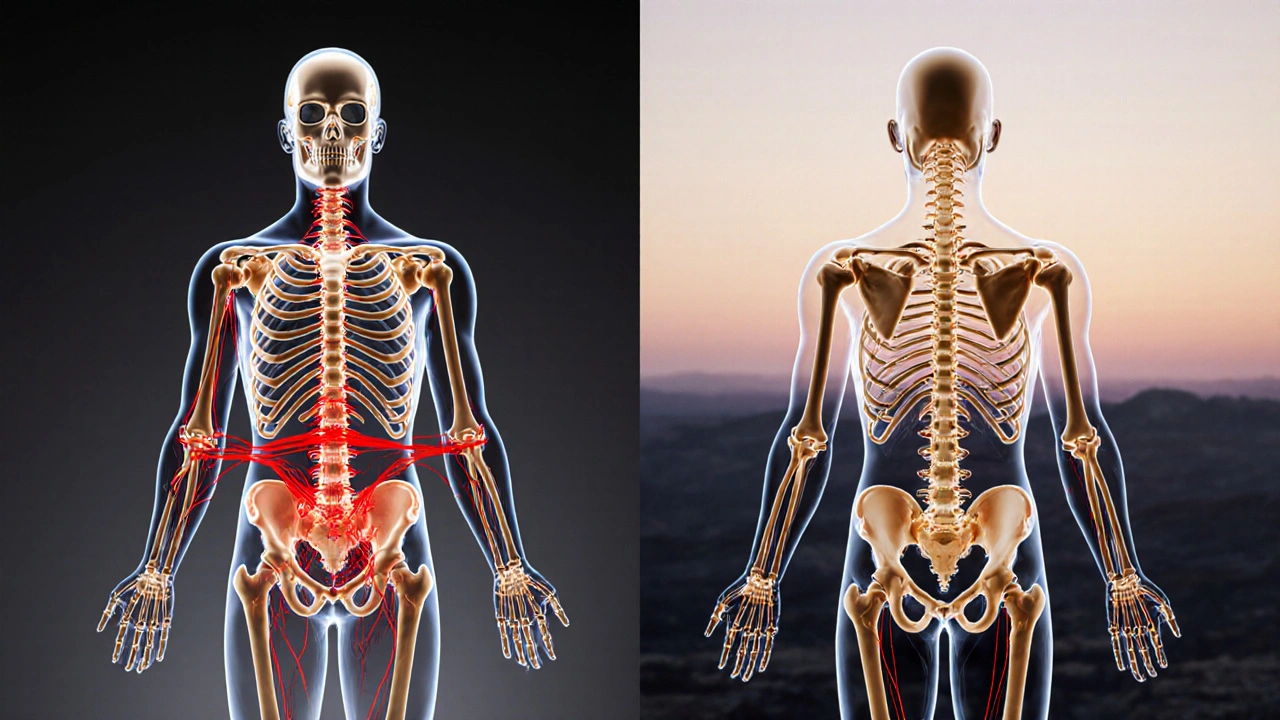
Who Benefits Most
Rolfing works best for people with:
- Chronic lower back pain that doesn’t respond to other treatments
- Postural issues-rounded shoulders, forward head, uneven hips
- Recurring injuries from sports or physical work
- Stiffness that gets worse with age
It’s not for everyone. If you have osteoporosis, recent fractures, or active inflammation like rheumatoid arthritis, Rolfing isn’t safe. Always check with your doctor first.
But for those with long-standing back pain that’s become part of their identity, Rolfing offers something rare: a real chance to change how your body works, not just mask the pain.
How It Compares to Other Therapies
| Treatment | Focus | Duration of Relief | Requires Active Participation? | Long-Term Structural Change? |
|---|---|---|---|---|
| Rolfing | Fascia and whole-body alignment | Months to years | Yes | Yes |
| Massage Therapy | Muscle relaxation | Hours to days | No | No |
| Chiropractic | Joint alignment | Days to weeks | Minimal | Often no |
| Physical Therapy | Strength and mobility | Weeks to months | Yes | Sometimes |
| Pain Medication | Symptom suppression | Hours | No | No |
Rolfing stands out because it doesn’t just treat pain-it changes the system that causes it. Other therapies help you manage. Rolfing helps you rebuild.
Real Results, Not Just Hope
A woman in her 40s from Melbourne started Rolfing after two years of back pain following a car accident. She couldn’t sleep on her side. Walking more than 10 minutes hurt. After six sessions, she hiked 12 kilometers in the Dandenongs. She didn’t just feel better-she got her life back.
Another client, a warehouse worker with degenerative disc disease, had been told he’d need surgery. He did Rolfing instead. Three years later, he’s still working. His MRI hasn’t changed-but his pain has. His body learned to distribute load differently.
This isn’t magic. It’s biomechanics. Your body adapts. Rolfing gives it the right signals to adapt in a healthier way.
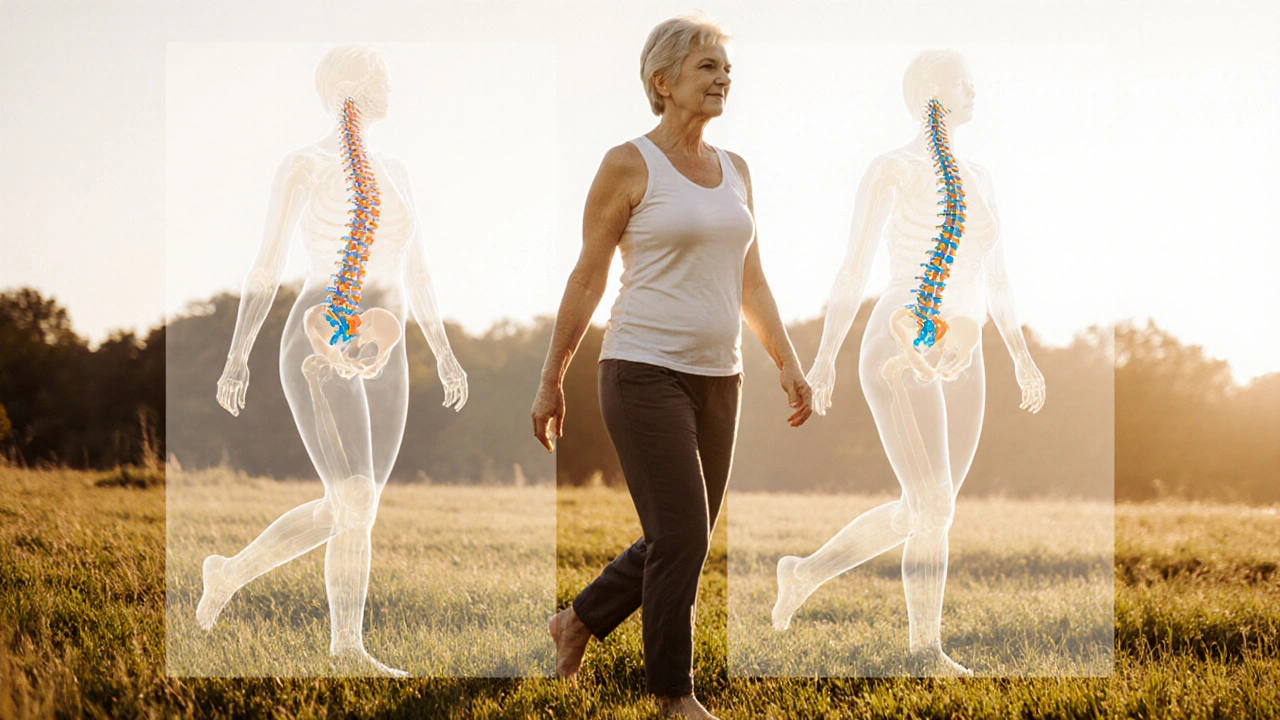
Where to Find a Qualified Rolfer
Not everyone calling themselves a ‘bodyworker’ is trained in Rolfing. Look for practitioners certified by the Rolf Institute of Structural Integration in Boulder, Colorado. They complete over 700 hours of training, including anatomy, physiology, and hands-on technique.
In Australia, certified Rolfers are listed on the Rolf Institute’s website. You can also ask for references. A good Rolfer will explain what they’re doing, why, and how it connects to your pain. If they just start pressing without talking, walk away.
Is Rolfing Worth the Cost?
A full 10-session series typically costs between $1,800 and $2,500 in Australia. That’s more than a few massages. But think of it as an investment in your body’s long-term function. Compare it to the cost of ongoing painkillers, missed work, or surgery. One study from the University of Sydney found that people who completed Rolfing reduced their annual healthcare spending on back pain by 41% over two years.
Some private health insurers in Australia cover Rolfing under ‘allied health’ or ‘remedial massage’ benefits. Check your policy. You might get 50-80% back.
What Happens After the Series?
You don’t need to keep doing Rolfing forever. After the 10 sessions, most people feel stable. But your body changes over time-new injuries, pregnancy, aging. Many return for a ‘tune-up’ every 12 to 18 months.
What’s more important is what you carry forward: better posture, awareness of how you move, and the ability to notice when your body starts pulling out of alignment. That’s the real breakthrough.
Final Thought: Pain Isn’t Normal
Just because back pain is common doesn’t mean it’s normal. You don’t have to live with it. Rolfing doesn’t promise miracles. But it does promise something rarer: lasting change. If you’ve tried everything else and still hurt, it’s worth asking: What if your pain isn’t in your spine-but in your structure?
Is Rolfing the same as massage?
No. Massage relaxes muscles temporarily. Rolfing reshapes connective tissue to improve how your whole body is structured. It’s not about feeling good during the session-it’s about feeling different for months afterward.
Does Rolfing hurt?
It can be intense, but it shouldn’t be unbearable. A good Rolfer works with your nervous system, not against it. You’ll feel deep pressure, sometimes discomfort, but you’re always in control. If it feels like pain, speak up. The goal is release, not punishment.
How soon will I feel results?
Many people notice a difference after the first or second session-better breathing, less tension in the shoulders, standing taller. But lasting change takes time. The full 10-session series is designed to give your body a complete reset. Quick fixes don’t stick.
Can Rolfing help with sciatica?
Yes. Sciatica often comes from tight piriformis muscles or pelvic imbalance pulling on the sciatic nerve. Rolfing releases the fascial restrictions around the hips and lower spine that cause that pull. Many clients with sciatica report reduced numbness and tingling after just a few sessions.
Is Rolfing covered by Medicare or NDIS?
No, Rolfing is not covered by Medicare. However, some NDIS participants with approved plans for allied health services may be able to claim Rolfing if it’s linked to improving mobility or daily function. Always check with your NDIS planner first.
Can I do Rolfing if I’m pregnant?
Yes-but only with a Rolfer trained in prenatal Structural Integration. Standard Rolfing techniques aren’t safe during pregnancy. Specialized practitioners use gentler methods to support pelvic alignment and reduce lower back strain as your body changes.
Do I need to do all 10 sessions?
You don’t have to, but you won’t get the full benefit. The 10-session series is designed like a complete renovation-each step builds on the last. Some people feel great after three or five sessions, but the real transformation happens when the whole system is realigned.
What should I wear to a Rolfing session?
Wear comfortable clothing that lets your body be seen-like underwear, shorts, or a sports bra. The Rolfer needs to observe your posture and movement. Most practitioners provide privacy for changing and draping.
How long do the effects last?
The structural changes from Rolfing are long-lasting because your body learns a new way to hold itself. Most people stay pain-free for years. Maintenance sessions every 12-18 months help keep things aligned, especially if you have a physically demanding job or lifestyle.
Can Rolfing help with neck and shoulder pain too?
Absolutely. Neck and shoulder pain often stem from the same root cause as back pain: poor alignment. When your pelvis is tilted or your ribcage is collapsed, your upper body compensates. Rolfing fixes the foundation, so tension doesn’t pile up in your neck and shoulders.

